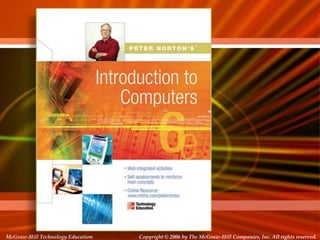Report
Share

Recommended
Recommended
More Related Content
What's hot
What's hot (20)
hbaseconasia2017: Large scale data near-line loading method and architecture

hbaseconasia2017: Large scale data near-line loading method and architecture
2015 GHC Presentation - High Availability and High Frequency Big Data Analytics

2015 GHC Presentation - High Availability and High Frequency Big Data Analytics
HBase and HDFS: Understanding FileSystem Usage in HBase

HBase and HDFS: Understanding FileSystem Usage in HBase
Capacity Planning For Your Growing MongoDB Cluster

Capacity Planning For Your Growing MongoDB Cluster
HBaseCon 2012 | HBase and HDFS: Past, Present, Future - Todd Lipcon, Cloudera

HBaseCon 2012 | HBase and HDFS: Past, Present, Future - Todd Lipcon, Cloudera
Hadoop World 2011: Advanced HBase Schema Design - Lars George, Cloudera

Hadoop World 2011: Advanced HBase Schema Design - Lars George, Cloudera
Viewers also liked
Viewers also liked (7)
Introduction to computers by peter norton 6 e (c.b)

Introduction to computers by peter norton 6 e (c.b)
Similar to Intro ch 06_b
Similar to Intro ch 06_b (20)
IntroDUCTION TO COMPUTERS WITH SUITABLE DIAGRAMS.ppt

IntroDUCTION TO COMPUTERS WITH SUITABLE DIAGRAMS.ppt
Gluster for Geeks: Performance Tuning Tips & Tricks

Gluster for Geeks: Performance Tuning Tips & Tricks
Tuning Linux Windows and Firebird for Heavy Workload

Tuning Linux Windows and Firebird for Heavy Workload
Red Hat Ceph Storage Acceleration Utilizing Flash Technology 

Red Hat Ceph Storage Acceleration Utilizing Flash Technology
More from محمد گلزار
More from محمد گلزار (13)
Intro ch 06_b
- 1. Copyright © 2006 by The McGraw-Hill Companies, Inc. All rights reserved.McGraw-Hill Technology Education McGraw-Hill Technology Education Copyright © 2006 by The McGraw-Hill Companies, Inc. All rights reserved.
- 2. Copyright © 2006 by The McGraw-Hill Companies, Inc. All rights reserved.McGraw-Hill Technology Education Chapter 6B Measuring and Improving Drive Performance
- 3. 6B-3 Drive Performance • Average access time – Also known as seek time – Time to find desired data – Measured in milliseconds – Depends on two factors • RPM • Time to access a track – Hard drive between 6 and 12 ms – CD between 80 and 800 ms
- 4. 6B-4 Drive Performance • Data transfer rate – How fast data can be read – Measured in Bps or bps – Hard drive ranges from 15 to 160 MBps – CD ROMS depend on X factor • 24x CD transfers 24 x 150 KBps – Floppy disks transfer at 45 KBps
- 6. 6B-6 Optimizing Performance • Disk optimization – Handled by operating system tool – Routine disk maintenance – Optimization should be run monthly
- 7. 6B-7 Optimizing Performance • Clean up unnecessary files – Delete temp files – Uninstall unused programs – Delete obsolete data files – Files should be cleaned weekly
- 8. 6B-8 Optimizing Performance • Scan a disk for errors – Bad spots on the media – Find and fix the error • Move data to a good spot • Mark the spot as bad – Disks should be scanned monthly
- 9. 6B-9 Optimizing Performance • Defragment a disk – Files fragment when resaved – Fragmented files load slower – Defragment puts the fragments together – Disks should be defragged monthly
- 10. 6B-10 Defragment
- 11. 6B-11 Optimizing Performance • File compression – Shrinks the size of a file – Takes up less space on disk – Reduce a disks performance – Will increase disk capacity – PKZip, WinZip and WinRAR
- 12. 6B-12 File Compression 763 KB on disk Compressed 157 KB
- 13. 6B-13 Drive Interface Standards • Interface – How the device is connected – Drive controllers allow transfer of data – Dictates transfer rate and access time
- 14. 6B-14 Drive Interface Standards • Enhanced Integrated Drive Electronics – EIDE – Generic term for drive controllers – Several names • Fast IDE • Advanced Technology Attachment (ATA) – Up to 2 devices per controller – Most computers have 2 EIDE controllers
- 15. 6B-15 Drive Interface Standards • Small Computer System Interface – SCSI – Higher transfer rates than EIDE – More than 40 devices per SCSI controller • Computers may have several SCSI controllers – Many versions exist • Versions are typically incompatible – Found in servers and workstations
- 16. 6B-16 Drive Interface Standards • USB and FireWire – External drives – Transfer rate is limited – Many devices can be connected
- 17. Copyright © 2006 by The McGraw-Hill Companies, Inc. All rights reserved.McGraw-Hill Technology Education Chapter 6B End of Chapter
